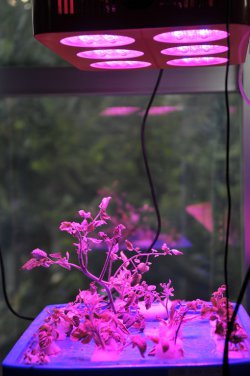Urban Farming: No Soil Needed
 By Roger Mu and David Li
By Roger Mu and David Li
Local tech workshop Xinchejian shares with Talk Magazine some of its newest inventions. This month, we learn how you can apply the knowledge of hydroponics to set up your own urban farm.
When most people hear the word ‘farming’, the following comes to mind: rising with the sun, toiling away in the dirt, avoiding bug bites and getting one heck of a tan.
People have been cultivating plants in this way for thousands of years, but only within the past 50 years have the fundamental processes and inner workings of agriculture come to be fully understood, with ‘urban farming’ being one of the main results. Combining modern materials and manufacturing techniques, this new kind of farming transforms previously unproductive urban areas, such as balconies and roof tops, into food producing mini-farms.
At Xinchejian, we apply hydroponics (the cultivation of plants without the use of soil) to a special form of urban farming that increases plant growth and minimises maintenance. Typically one of soil’s most important roles is to give plants structural support, but we are able to use natural by-products such as shredded coconut husks, sawdust or even expanded clay pebbles or volcanic glass instead. For providing nutrients, we use a specialised water-based solution which, when done correctly, offers faster growth, larger fruit, up to 90% less water use, higher planting density and fewer pest and disease problems.
This in itself is revolutionary, but modern technology has an even bigger role to play. With the help of electronic pumps, timers, sensors, fans, testing meters (and artificial lights if there isn't enough natural sunlight), the entire growing process and environment can be precisely controlled, automated and set up indoors. With the right setup, daily maintenance can be reduced to as little as a quick peek every couple of days.
We also use a special form of hydroponics called aquaponics, which applies methods such as using the waste produced by fish as a source of nutrients for plants. Unlike in traditional aquariums and even hydroponic systems where water must be changed regularly, in a properly functioning aquaponic system water doesn’t have be removed; it only needs to be added to replace water lost through evaporation. Therefore, an aquaponic system is like a closed-circle ecosystem, with the only substantial inputs being fish food and water. And best of all, in a few months you not only have fresh, organic vegetables, but fresh, homegrown fish as well!
If you're interested in seeing some fish and vegetables that have been grown in the setups of some of Shanghai’s urban farmers, Xinchejian holds an urban farming corner every Saturday afternoon at 2pm. For RMB 150 you can learn about and secure the necessary materials to get started and after a few sessions you’ll be able to grow your very own fresh tomatoes, cucumbers, basil and more!
